Create backups using the version chain scheme with Acronis True Image (Cyber Protect Home Office)
- Backup
- Acronis True Image
- 21 July 2025 at 07:56 UTC
-

- 2/6
3. Create the 2nd full backup
If you back up your computer again, Acronis Cyber Protect Home Office (True Image) will create a new full backup.
Click the "Backup" button.
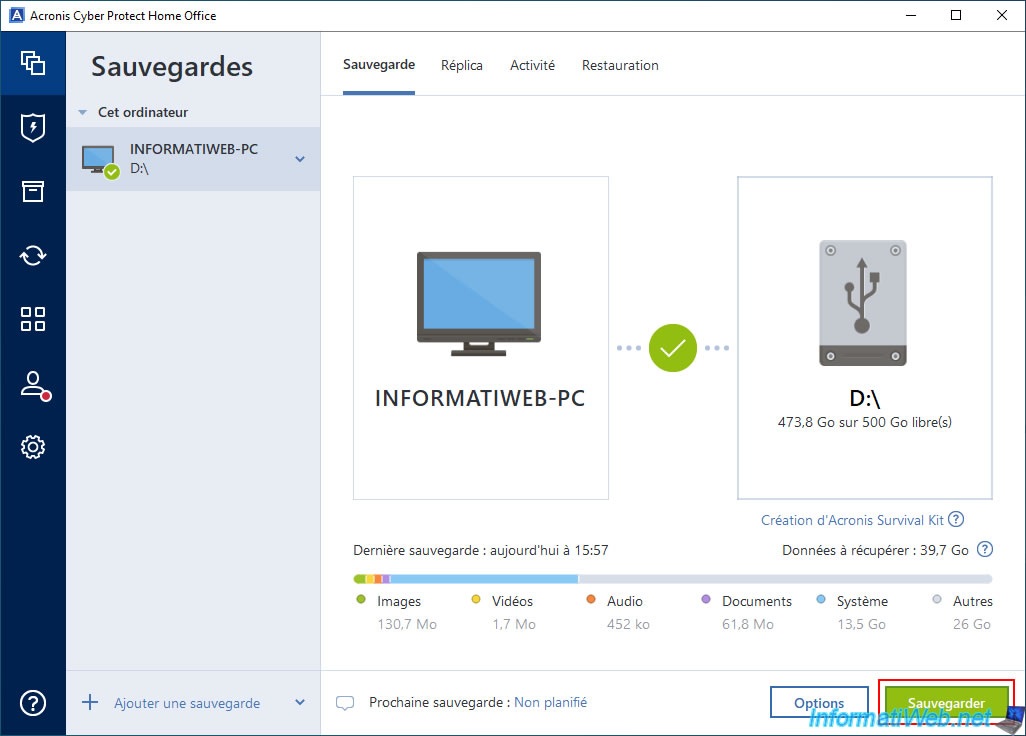
Please wait while your computer is backed up.
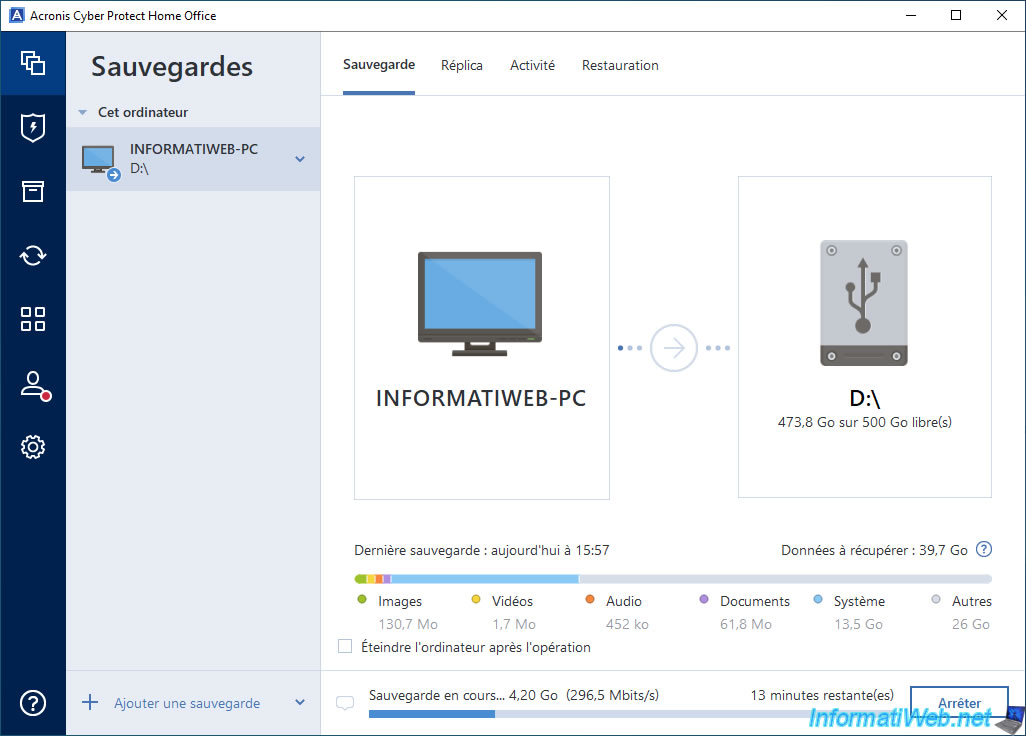
On your external hard drive, you will see that a new ".tibx" file has been created.
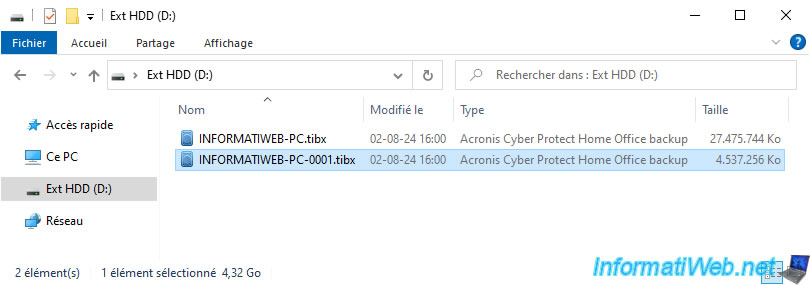
Your PC backup is complete.
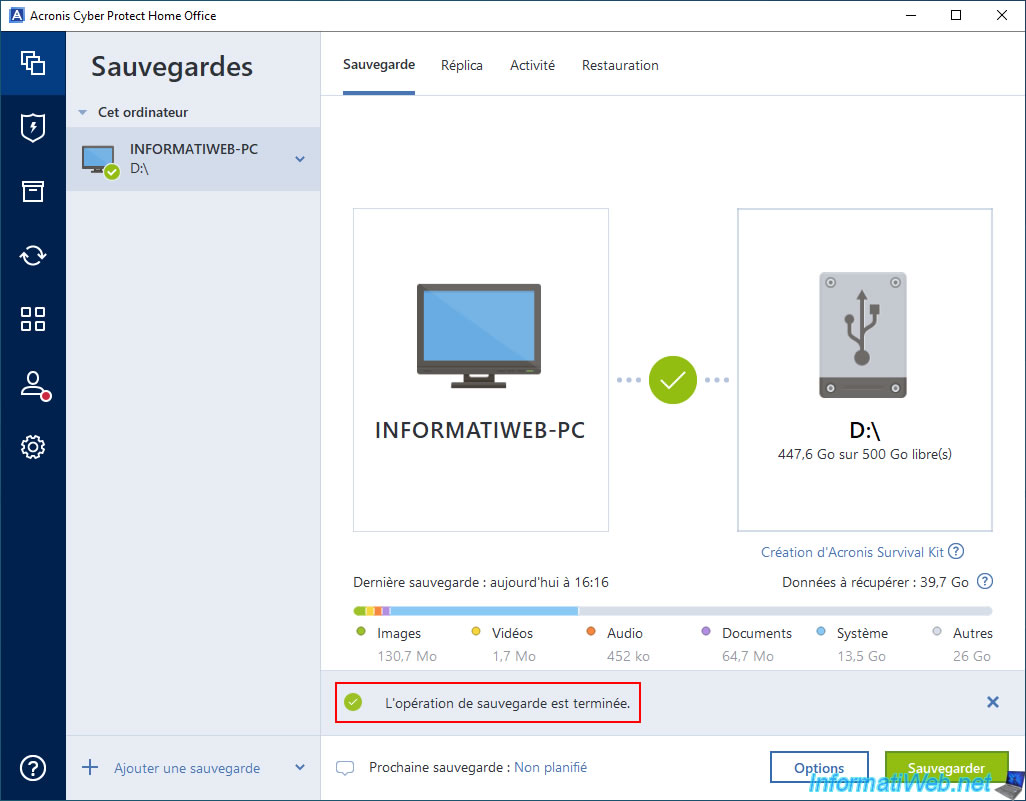
If you go to the "Activity" tab, you can see that this 2nd backup is again a full backup.
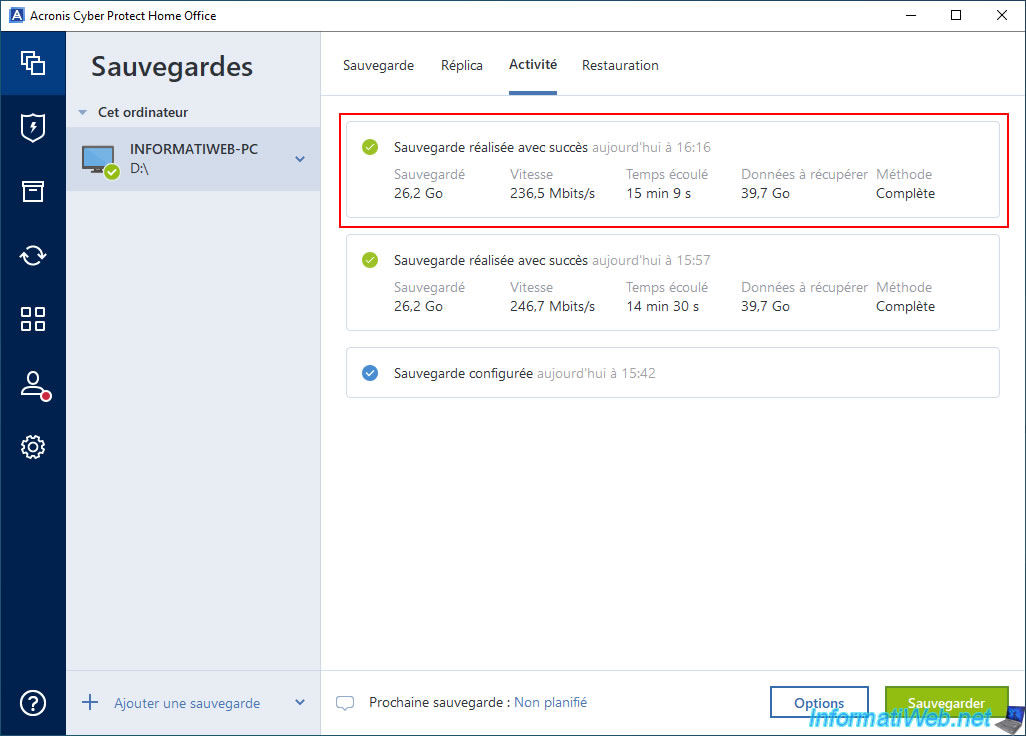
If you go to the "Restore" tab, you will therefore have access to 2 versions (which correspond to the 2 complete backups that you have just created).
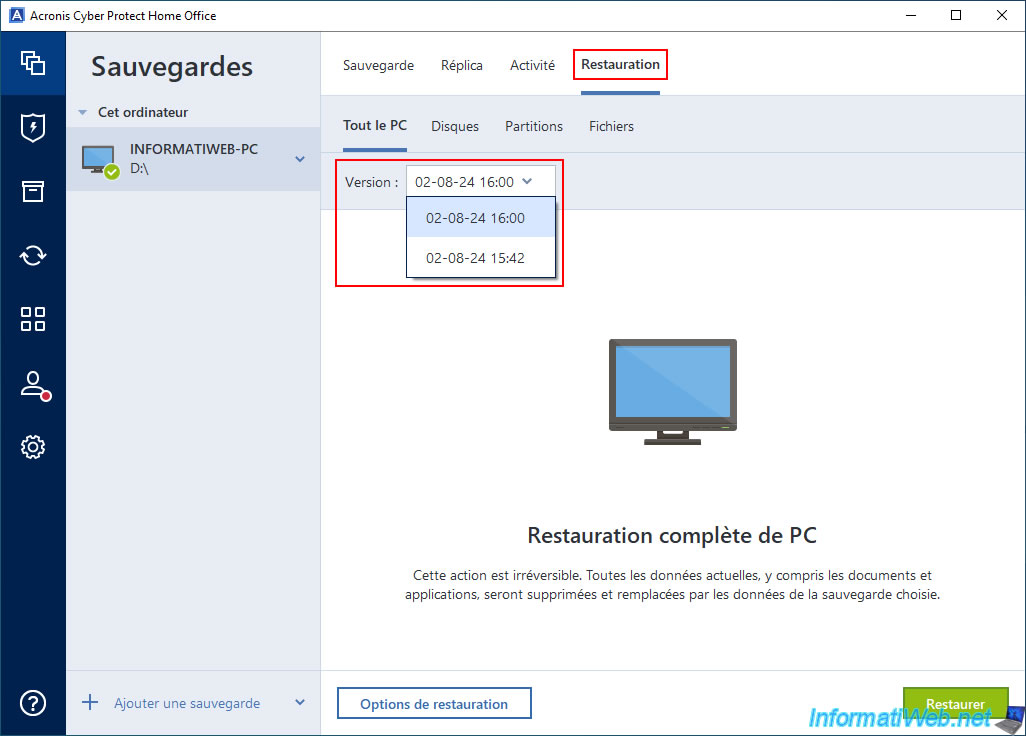
On your external hard drive, looking at the size of your ".tibx" files, you will see that these 2 backups are full backups.
Note: as explained at the beginning of the tutorial, the 1st backup can never be deleted when you use the "Version Chain Model" backup template.
Hence the little padlock that we added on each screenshot to the right of this 1st backup.
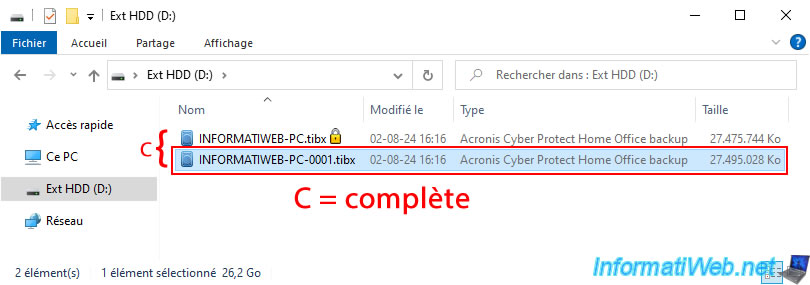
4. Create the 5 differential backups
As explained before, with the backup model "Version chain model", Acronis Cyber Protect Home Office (True Image) will start by creating 2 full backups.
Then, the next 5 backups will be differential backups.
Here is the proof.
We click on the "Backup" button again.
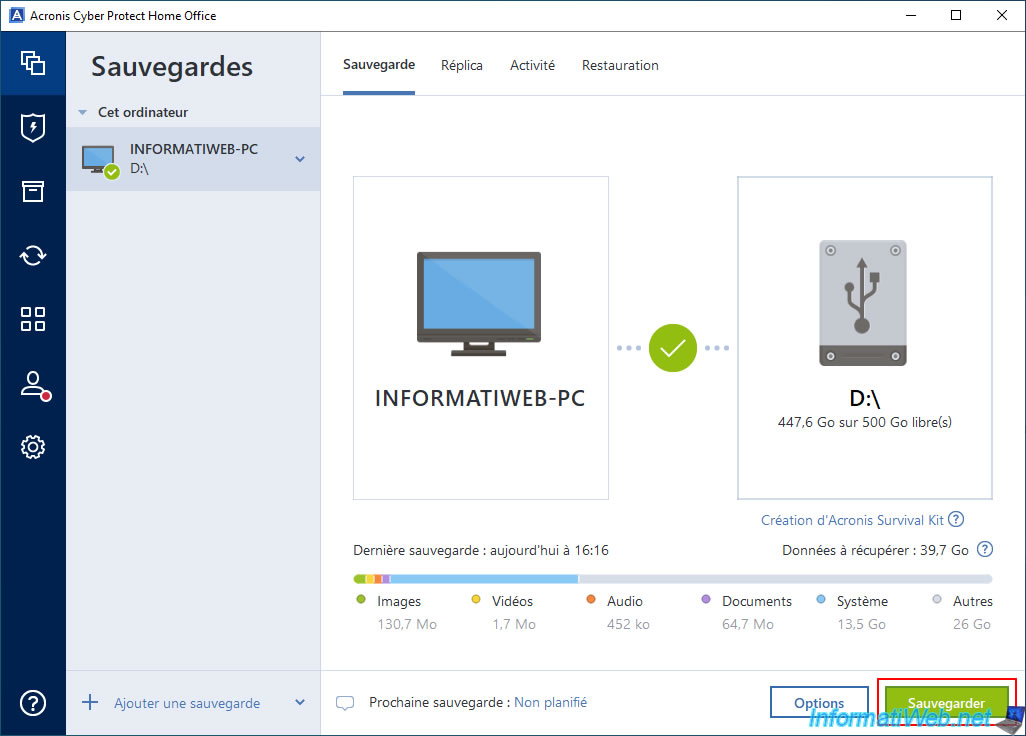
As expected, the backup performed is of type "Differential" (as you can check in the "Activity" tab).
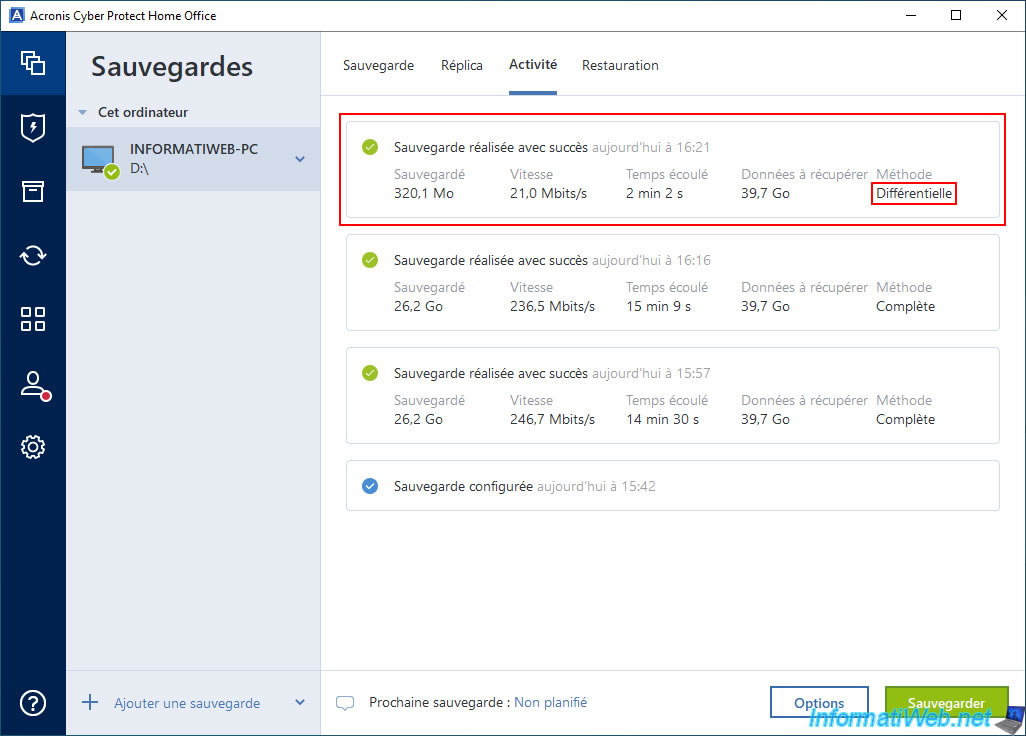
In the "Restoration" tab, you will have 3 versions available:
- the most recent backup (02-08-24 16:19) is of type "Differential".
- the other 2 backups (02-08-24 16:00/15:42) are of type "Complete".
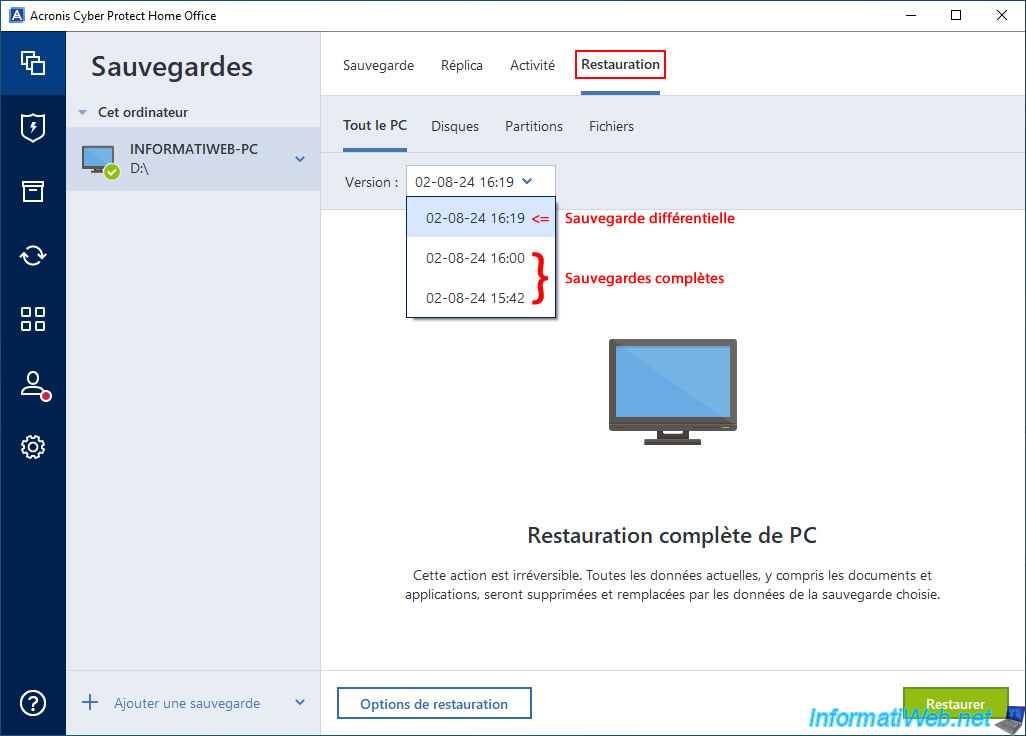
If you look at your external hard drive and look at the size of the ".tibx" files on it, you will easily notice that:
- the first 2 backups are full backups.
- the 3rd backup is a differential backup.
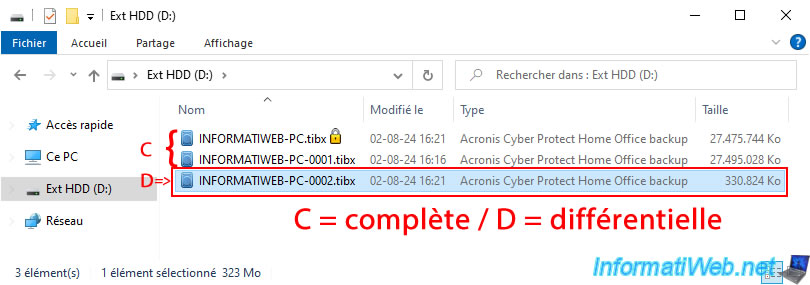
As explained previously, once the first 2 full backups are created, the next 5 backups will be of the "Differential" type.
So we backed up this PC 4 more times.
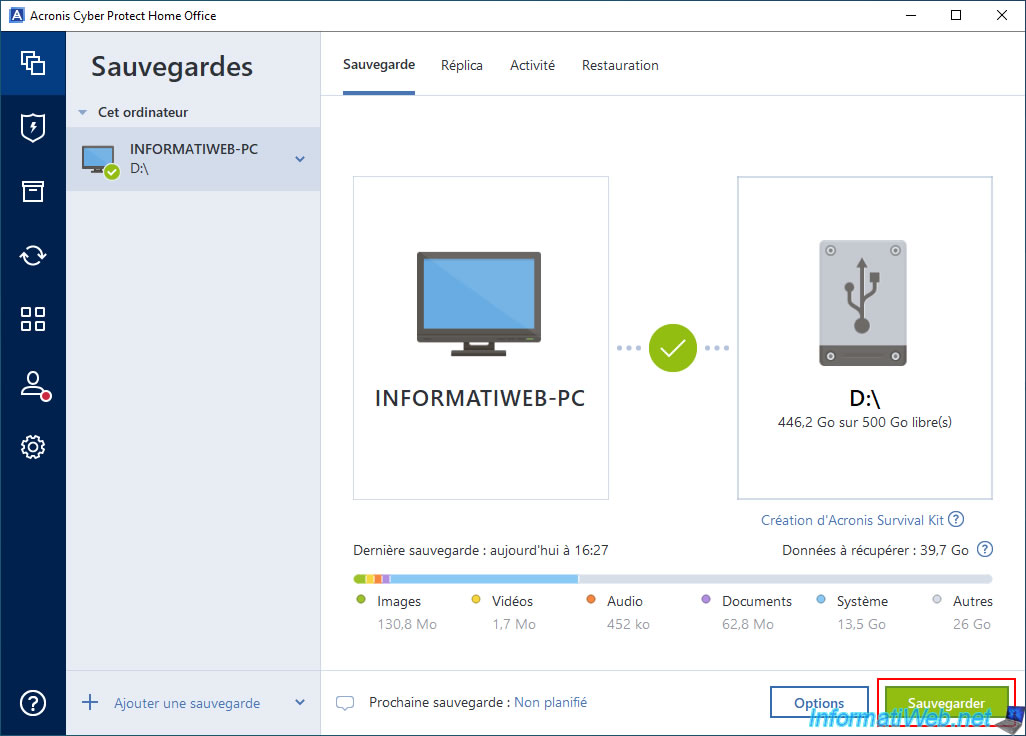
As expected, these 4 new backups are of the "Differential" type.
Which makes 5 differential backups in total (including the previous one).
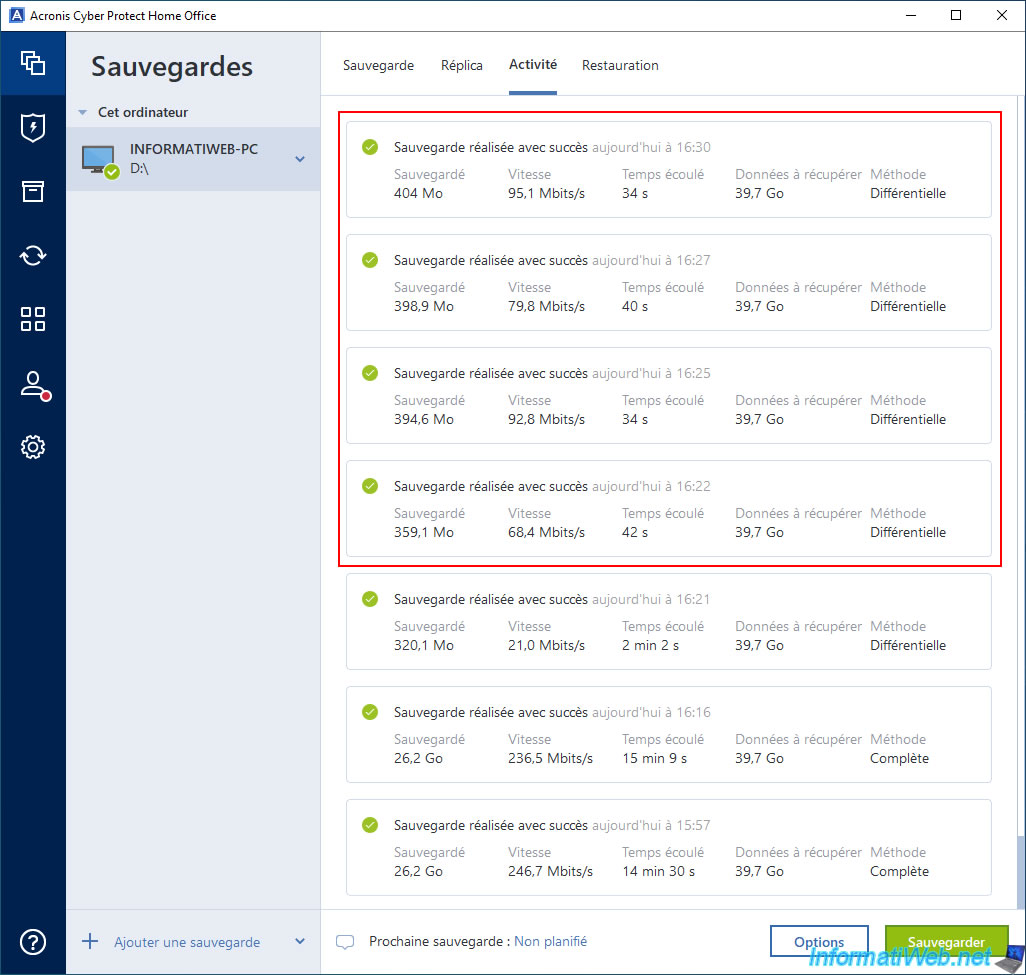
In the "Restoration" tab, we therefore have 7 versions:
- the 5 recent backups are differential backups.
- the 2 older backups are full backups.
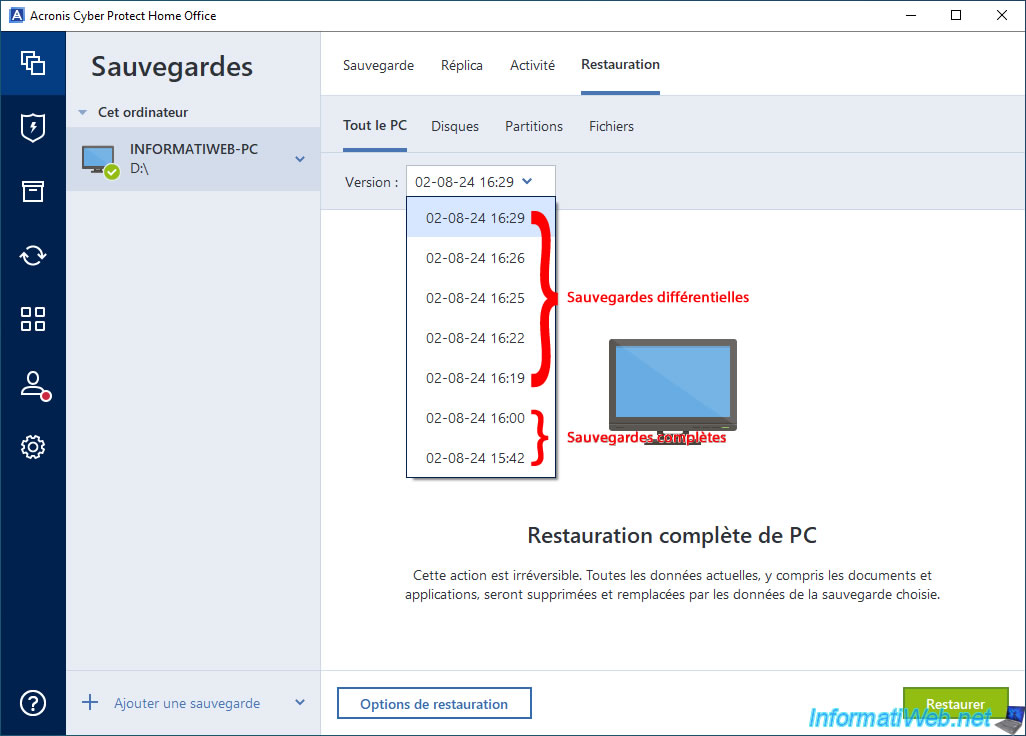
On your external hard drive, you will therefore have 7 ".tibx" files, including:
- the first 2 ".tibx" files are full backups.
- the next 5 ".tibx" files are differential backups.
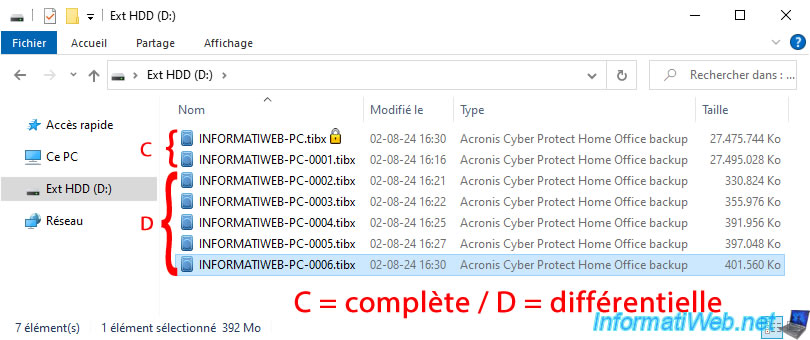
Share this tutorial
To see also
-

Backup 9/15/2025
Acronis True Image - Backing up your smartphone to Acronis Cloud (encrypted backup)
-
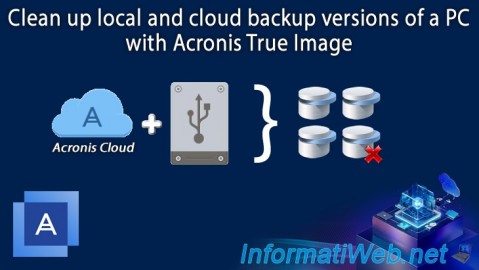
Backup 10/6/2025
Acronis True Image - Clean up backup versions of a PC (local and Cloud)
-
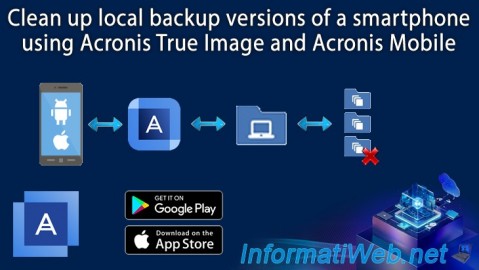
Backup 9/8/2025
Acronis True Image - Clean up local smartphone backups
-
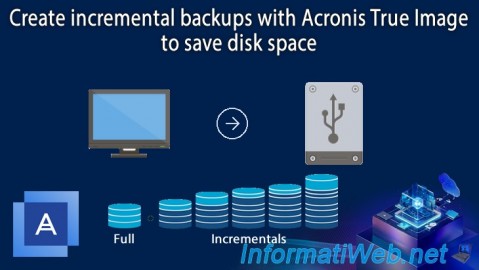
Backup 7/14/2025
Acronis True Image - Create incremental backups
No comment